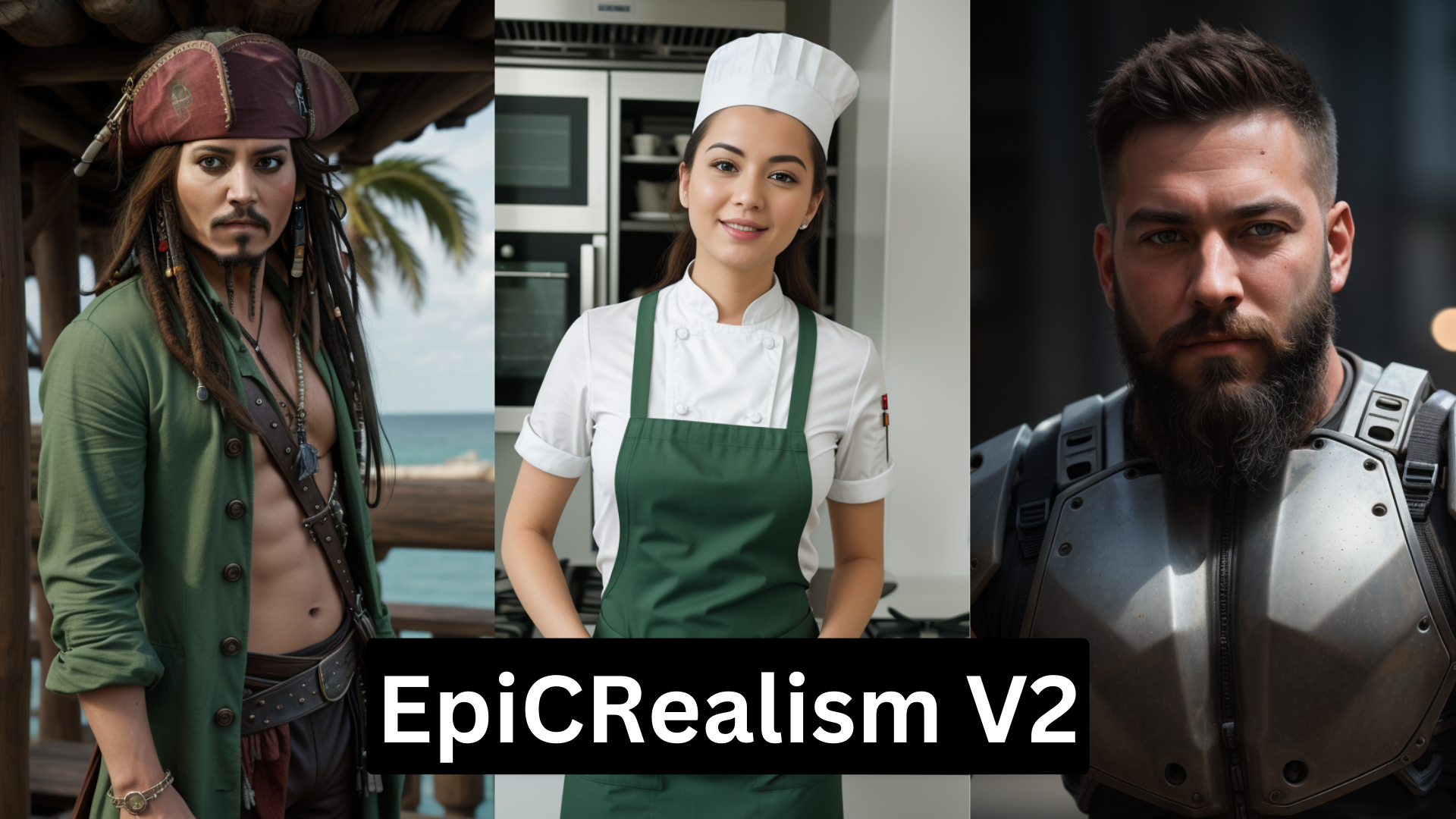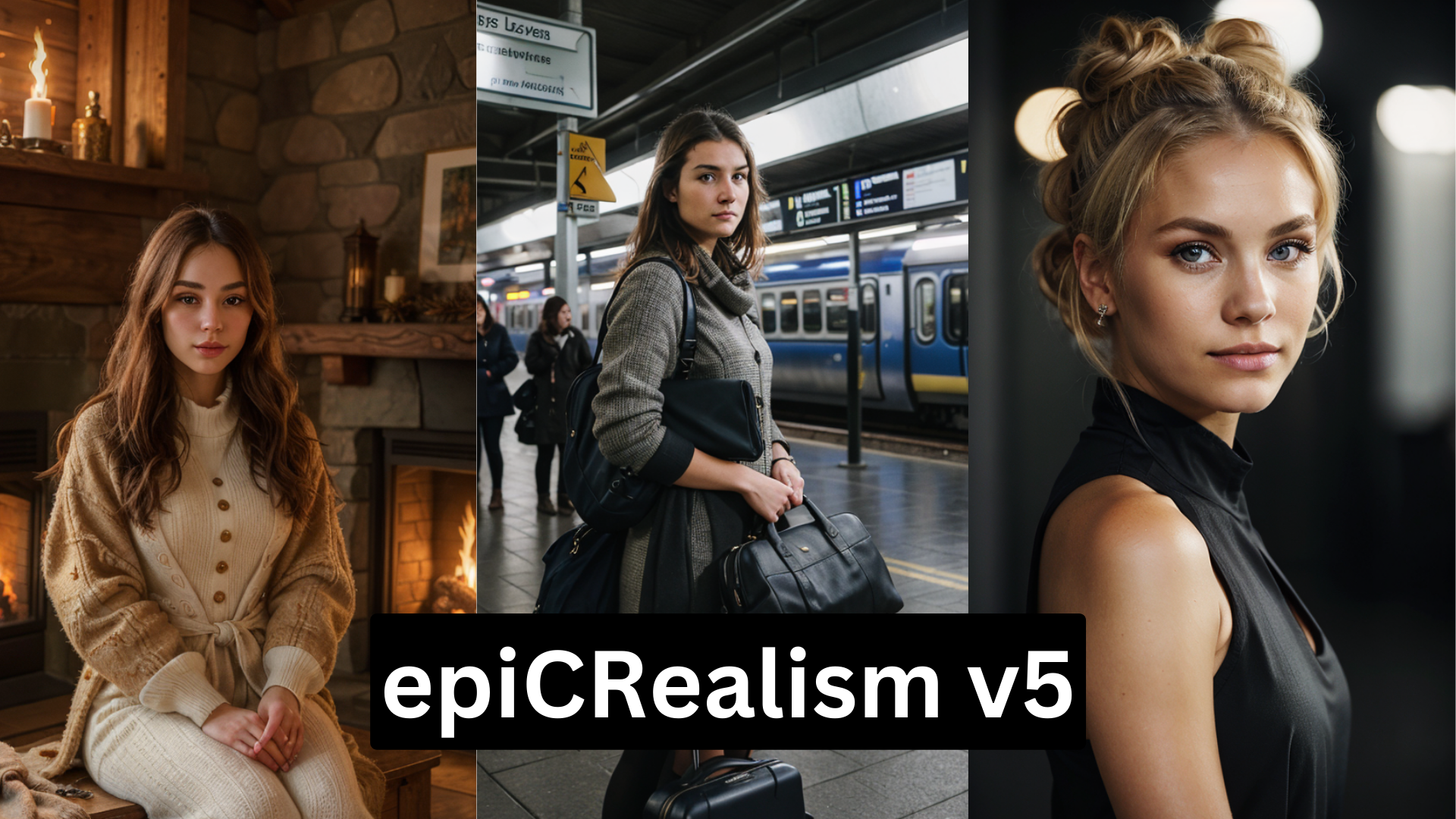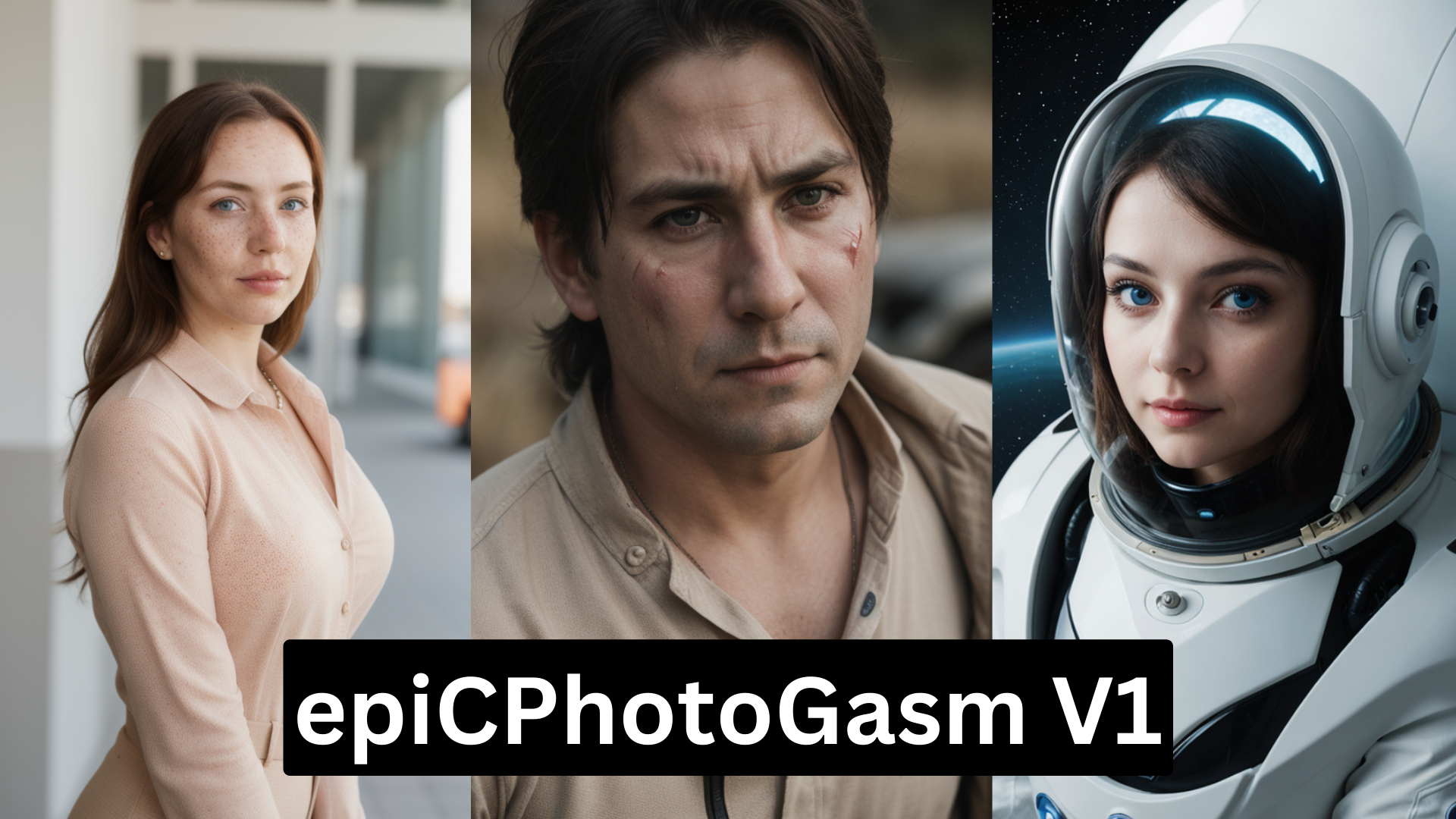epicrealism-v2
Maintainer: pagebrain

1

| Property | Value |
|---|---|
| Run this model | Run on Replicate |
| API spec | View on Replicate |
| Github link | View on Github |
| Paper link | View on Arxiv |
Create account to get full access
Model overview
epicrealism-v2 is a powerful AI text-to-image generation model created by pagebrain. It builds upon the capabilities of previous epiCRealism models, offering enhanced features such as negative embeddings, img2img, inpainting, and a safety checker. Compared to similar models like epicrealism-v4, epicrealism-v5, and epicphotogasm-v1, epicrealism-v2 provides a more refined and polished image generation experience, with the ability to produce highly realistic and visually stunning outputs.
Model inputs and outputs
epicrealism-v2 accepts a wide range of inputs, including text prompts, input images for img2img and inpainting, and various configuration settings such as seed, width, height, guidance scale, and number of inference steps. The model can generate multiple output images per input, with a safety checker that can be toggled on or off.
Inputs
- Prompt: The text prompt that describes the desired image.
- Negative Prompt: Specific terms to exclude from the generated image.
- Image: An input image for img2img or inpainting mode.
- Mask: A mask for the input image, where black areas will be preserved and white areas will be inpainted.
- Seed: A random seed value to control the image generation.
- Width/Height: The desired dimensions of the output image.
- Num Outputs: The number of images to generate.
- Guidance Scale: The scale for classifier-free guidance, which controls the balance between the prompt and the model's internal knowledge.
- Num Inference Steps: The number of denoising steps to perform during image generation.
- Safety Checker: A toggle to enable or disable the safety checker, which can filter out potentially unsafe content.
Outputs
- Generated Images: The output images produced by the model based on the provided inputs.
Capabilities
epicrealism-v2 is capable of generating highly realistic and visually striking images from text prompts. The model's ability to utilize negative embeddings and perform img2img and inpainting tasks sets it apart, allowing users to refine and manipulate images with precision. The safety checker feature also provides an additional layer of control, making epicrealism-v2 suitable for a wide range of use cases.
What can I use it for?
With its advanced capabilities, epicrealism-v2 can be used for a variety of applications, such as creating unique and personalized artwork, enhancing existing images, or generating concept art for games, films, or other creative projects. The model's versatility also makes it a valuable tool for e-commerce, advertising, and content creation, where high-quality, customized images are in demand. By leveraging the power of epicrealism-v2, users can unlock new possibilities and push the boundaries of what's achievable with text-to-image generation.
Things to try
One interesting aspect of epicrealism-v2 is its ability to generate images with a strong sense of realism and attention to detail. Users can experiment with prompts that explore specific themes, styles, or subject matter, and observe how the model captures the nuances of the requested content. Additionally, the model's img2img and inpainting capabilities allow for intriguing experiments, where users can take existing images and modify or build upon them to create entirely new and unexpected visuals.
This summary was produced with help from an AI and may contain inaccuracies - check out the links to read the original source documents!
Related Models

epicrealism-v5

9
The epicrealism-v5 model is a high-performance AI model created by the team at Pagebrain. It is part of a series of epiCRealism models, which also includes models like epiCRealism v2 and epiCPhotoGasm v1. The epicrealism-v5 model is built on a T4 GPU and uses various negative embeddings, enabling it to perform tasks like img2img, inpainting, and safety checking. Model inputs and outputs The epicrealism-v5 model accepts a variety of inputs, including an input prompt, an optional input image for img2img or inpainting tasks, and a seed value. It can generate multiple output images based on these inputs, with configurable parameters like guidance scale and number of inference steps. Inputs Prompt**: The text prompt that describes the desired output image. Image**: An optional input image for img2img or inpainting tasks. Seed**: A random seed value to control the generation process. Negative Prompt**: Specify things to not see in the output, using supported embeddings. Prompt Strength**: The strength of the prompt when using an input image. Outputs Images**: The generated output images, in the form of image URIs. Capabilities The epicrealism-v5 model is capable of generating high-quality, photorealistic images based on text prompts. It can also perform img2img and inpainting tasks, allowing users to modify existing images or fill in missing areas. The model includes a safety checker to help filter out potentially unsafe or inappropriate content. What can I use it for? The epicrealism-v5 model can be useful for a variety of creative and commercial applications, such as concept art, product visualization, and photo editing. Its img2img and inpainting capabilities make it particularly well-suited for tasks like restoring old or damaged photos, adding elements to existing images, or creating photo-realistic visualizations of products or designs. Things to try One interesting aspect of the epicrealism-v5 model is its ability to generate highly detailed and realistic images while avoiding common pitfalls like distorted anatomy or uncanny facial features. Try experimenting with prompts that describe specific, detailed scenes or objects, and see how the model handles the challenge. You can also try using the img2img and inpainting features to enhance or modify existing images in creative ways.
Updated Invalid Date

epicrealism-v4

5
The epicrealism-v4 model is a powerful AI model developed by Replicate creator pagebrain. It is part of a series of epiCRealism and epiCPhotoGasm models, which are designed to generate high-quality, realistic-looking images. The epicrealism-v4 model shares similar capabilities with other models in this series, such as dreamshaper-v8, realistic-vision-v5-1, and majicmix-realistic-v7, all of which are also created by pagebrain. Model inputs and outputs The epicrealism-v4 model accepts a variety of inputs, including text prompts, input images for img2img or inpainting, and various parameters to control the output, such as seed, width, height, and guidance scale. The model can generate multiple output images in response to a single prompt. Inputs Prompt**: The input text prompt that describes the desired image. Negative Prompt**: Specifies things to not see in the output, using supported embeddings. Image**: An input image for img2img or inpainting mode. Mask**: An input mask for inpaint mode, where black areas will be preserved and white areas will be inpainted. Seed**: The random seed to use for generating the output. Width and Height**: The desired width and height of the output image. Num Outputs**: The number of images to generate. Prompt Strength**: The strength of the prompt when using an init image. Num Inference Steps**: The number of denoising steps to perform. Guidance Scale**: The scale for classifier-free guidance. Safety Checker**: A toggle to enable or disable the safety checker. Outputs Output Image**: The generated image(s) that match the input prompt and parameters. Capabilities The epicrealism-v4 model is capable of generating high-quality, realistic-looking images based on text prompts. It can also perform img2img and inpainting tasks, allowing users to generate new images from existing ones or fill in missing parts of an image. The model incorporates various techniques, such as negative embeddings, to improve the quality and safety of the generated outputs. What can I use it for? The epicrealism-v4 model is well-suited for a variety of creative and practical applications. Users can leverage its capabilities to generate realistic-looking images for marketing, design, and art projects. It can also be used for tasks like photo restoration, object removal, and image enhancement. Additionally, the model's safety features make it suitable for use in commercial and professional settings. Things to try One interesting aspect of the epicrealism-v4 model is its ability to incorporate negative embeddings, which can help to avoid the generation of undesirable content. Users can experiment with different negative prompts to see how they affect the output and explore ways to fine-tune the model for their specific needs. Additionally, the model's img2img and inpainting capabilities allow for a wide range of creative possibilities, such as combining existing images or filling in missing elements to create unique and compelling compositions.
Updated Invalid Date

epicphotogasm-v1

57
epicphotogasm-v1 is a powerful AI model created by pagebrain that excels at generating high-quality, realistic images. This model builds upon pagebrain's previous work with models like epicrealism-v2 and dreamshaper-v8, incorporating features like negative embeddings, inpainting, and a safety checker to produce stunning results. Model inputs and outputs epicphotogasm-v1 takes a variety of inputs, including a prompt, an optional input image for img2img or inpainting, and various settings such as the number of outputs, guidance scale, and safety check. The model outputs an array of image URLs, allowing you to easily access the generated images. Inputs Prompt**: The text prompt that describes the desired image Image**: An optional input image for img2img or inpainting mode Mask**: An optional mask image to specify areas for inpainting Seed**: A random seed value to control the image generation Width/Height**: The desired dimensions of the output image Num Outputs**: The number of images to generate Guidance Scale**: The scale for classifier-free guidance Num Inference Steps**: The number of denoising steps to perform Negative Prompt**: Specify things to avoid in the output Outputs Array of image URLs**: The generated images Capabilities epicphotogasm-v1 is capable of producing strikingly realistic and detailed images across a wide range of subjects and styles. The model's strong performance in areas like img2img and inpainting make it a versatile tool for both image generation and editing. What can I use it for? epicphotogasm-v1 is well-suited for a variety of creative and commercial applications. You could use it to generate concept art, product visualizations, or even photorealistic landscapes and scenes. The model's inpainting capabilities also make it useful for tasks like object removal, background replacement, and image restoration. Things to try One interesting aspect of epicphotogasm-v1 is its ability to incorporate negative embeddings, which allows you to exclude specific elements from the generated images. This can be particularly useful for avoiding unwanted content or adding a unique stylistic twist to your creations. Additionally, the model's safety checker can help ensure that your images are appropriate for their intended use.
Updated Invalid Date

cyberrealistic-v3-3

6
cyberrealistic-v3-3 is an AI model developed by pagebrain that aims to generate highly realistic and detailed images. It is similar to other models like dreamshaper-v8, realistic-vision-v5-1, deliberate-v3, epicrealism-v2, and epicrealism-v4 in its use of a T4 GPU, negative embeddings, img2img, inpainting, safety checker, KarrasDPM, and pruned fp16 safetensor. Model inputs and outputs cyberrealistic-v3-3 takes a variety of inputs, including a text prompt, an optional input image for img2img or inpainting, a seed for reproducibility, and various settings to control the output. The model can generate multiple images based on the provided inputs. Inputs Prompt**: The text prompt that describes the desired image. Image**: An optional input image that can be used for img2img or inpainting. Seed**: A random seed value to ensure reproducible results. Width and Height**: The desired width and height of the output image. Num Outputs**: The number of images to generate. Guidance Scale**: The scale for classifier-free guidance, which affects the balance between the prompt and the model's learned priors. Num Inference Steps**: The number of denoising steps to perform during image generation. Negative Prompt**: Text that specifies things the model should avoid generating in the output. Prompt Strength**: The strength of the input image's influence on the output when using img2img. Safety Checker**: A toggle to enable or disable the model's safety checker. Outputs Images**: The generated images that match the provided prompt and other input settings. Capabilities cyberrealistic-v3-3 is capable of generating highly realistic and detailed images based on text prompts. It can also perform img2img and inpainting, allowing users to refine or edit existing images. The model's safety checker helps ensure the generated images are appropriate and do not contain harmful content. What can I use it for? cyberrealistic-v3-3 can be used for a variety of creative and practical applications, such as digital art, product visualization, architectural rendering, and scientific illustration. The model's ability to generate realistic images from text prompts can be particularly useful for creative professionals and hobbyists who want to bring their ideas to life. Things to try With cyberrealistic-v3-3, you can experiment with different prompts to see the range of images the model can generate. Try combining prompts with specific details or using the img2img or inpainting features to refine existing images. Adjust the various settings, such as guidance scale and number of inference steps, to see how they affect the output. Explore the negative prompt feature to see how you can guide the model away from generating unwanted content.
Updated Invalid Date